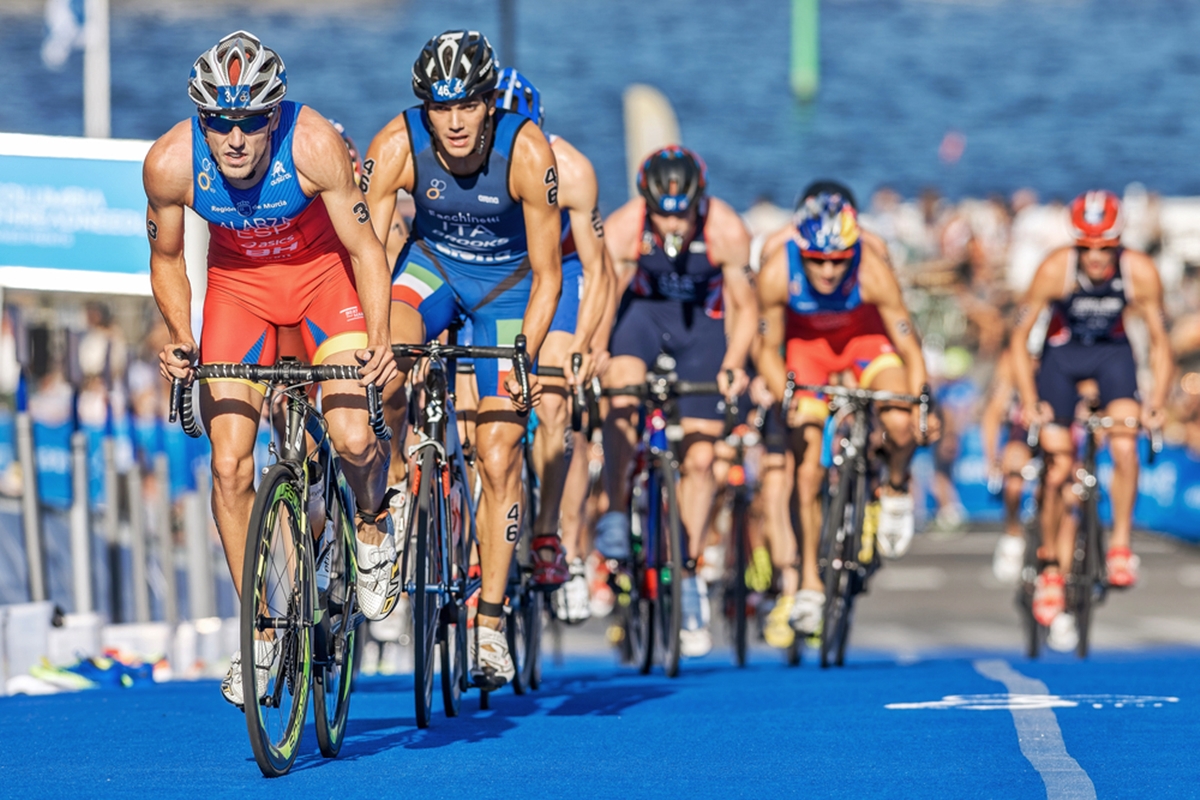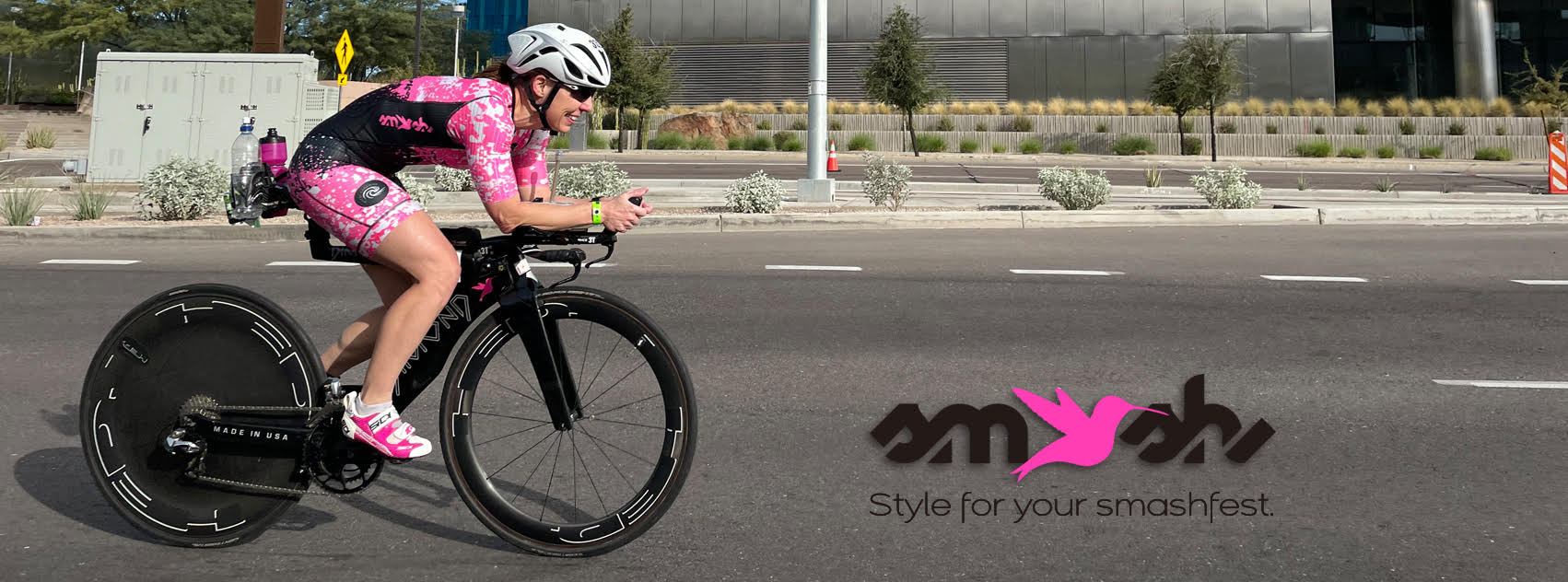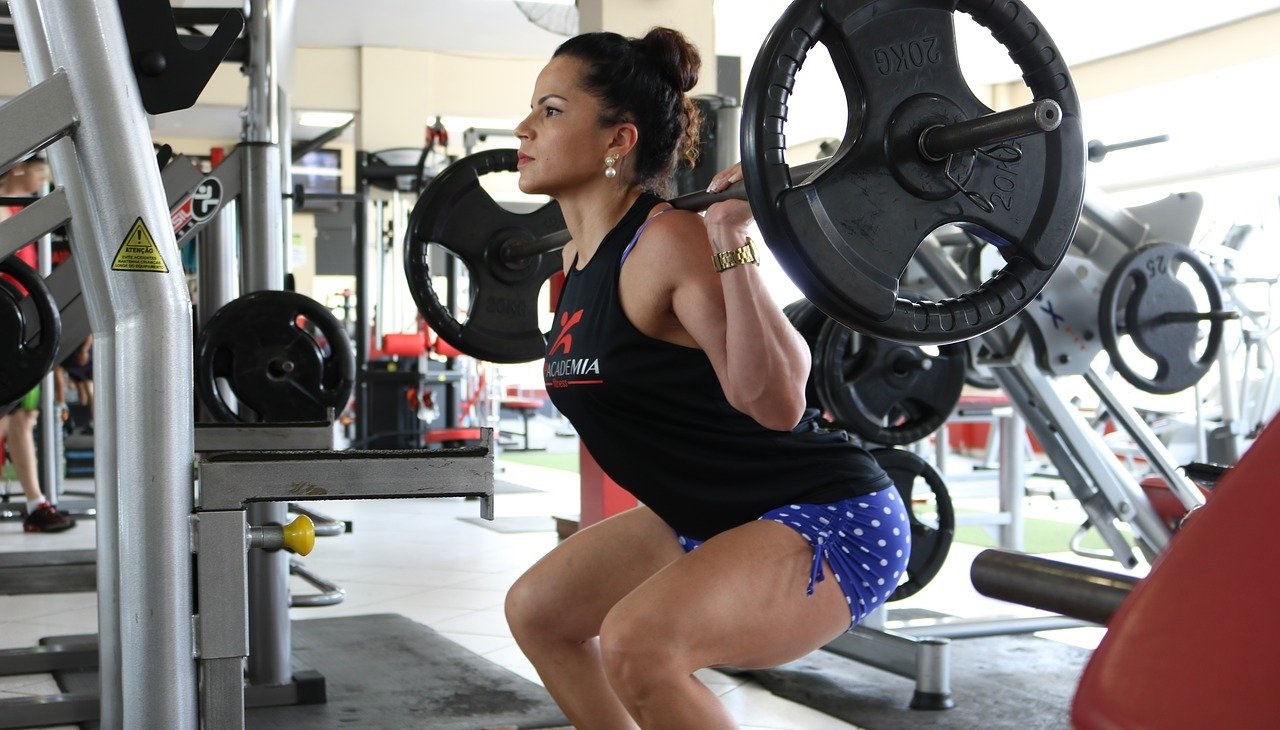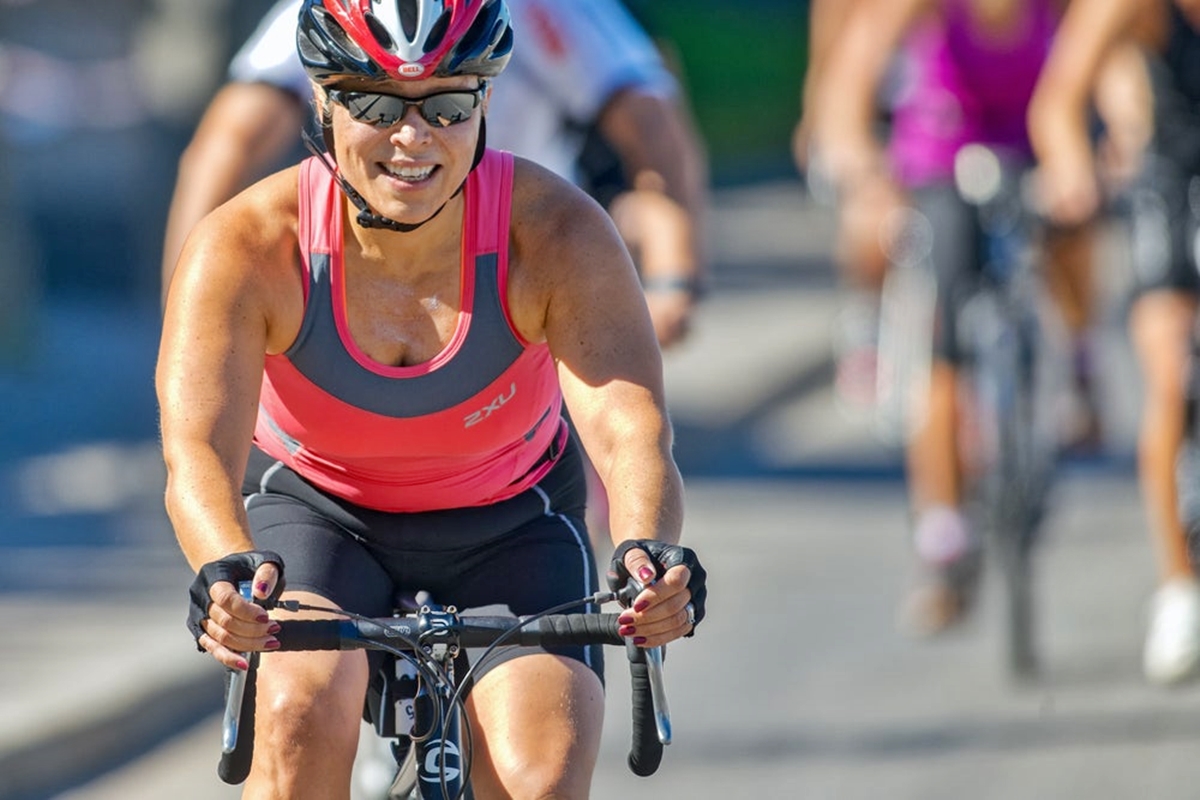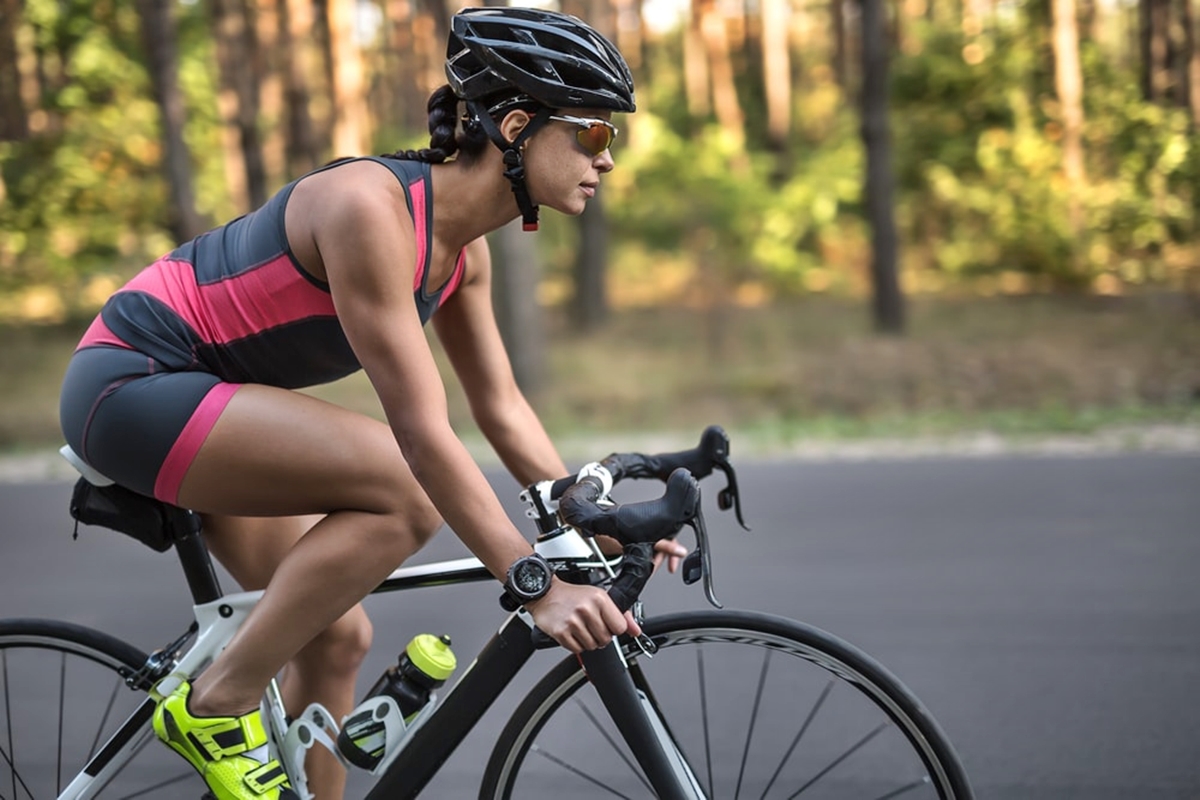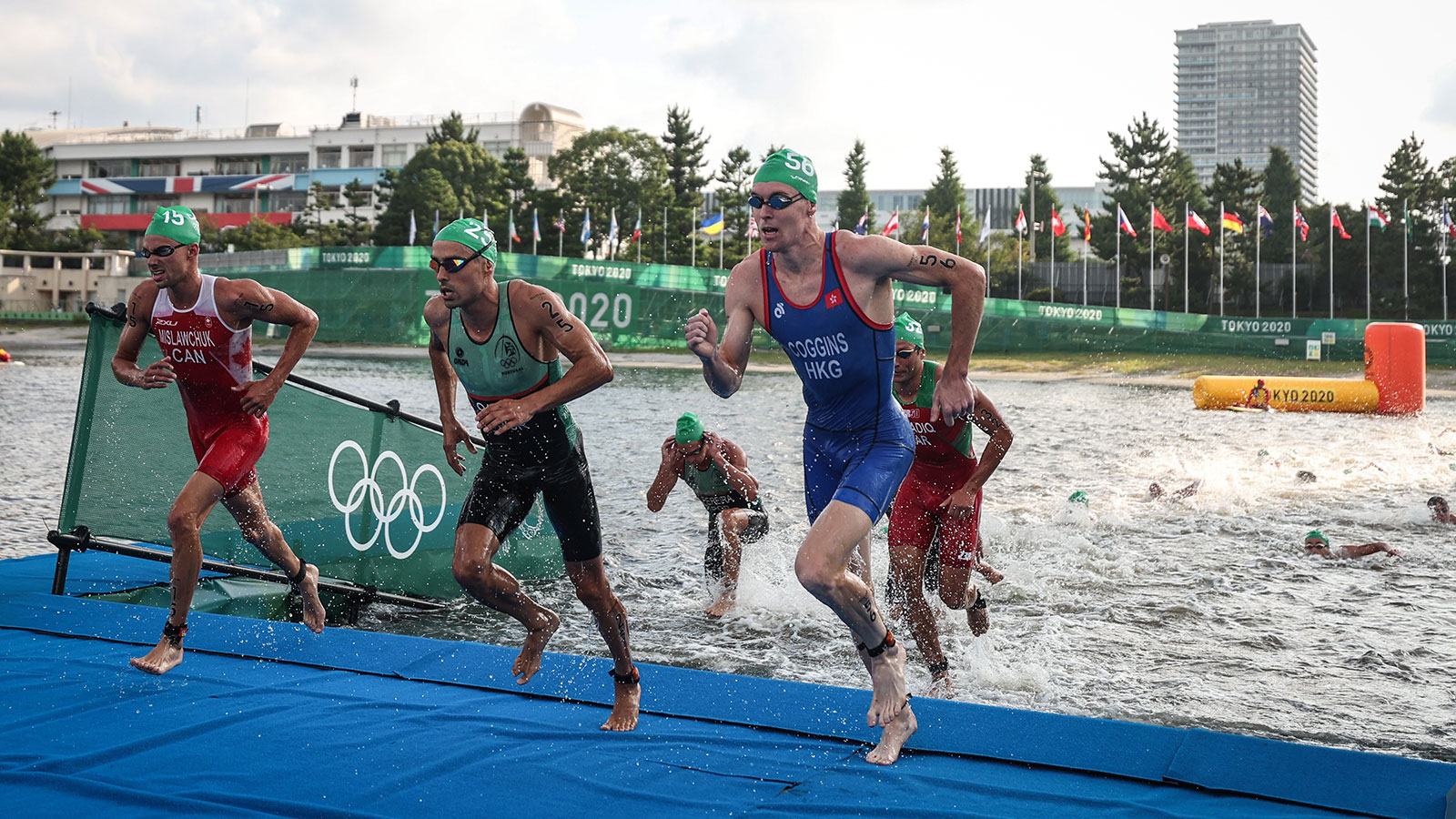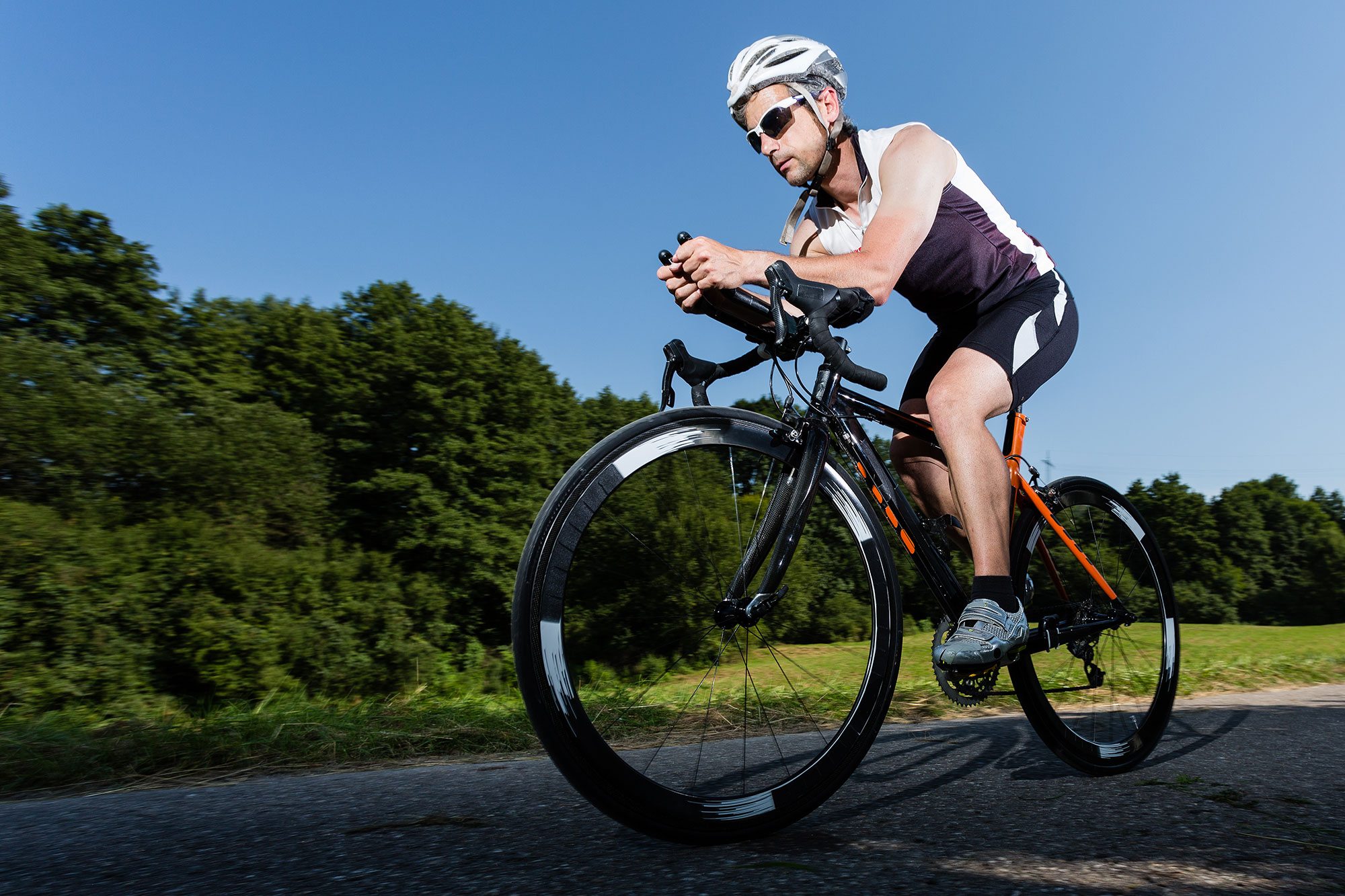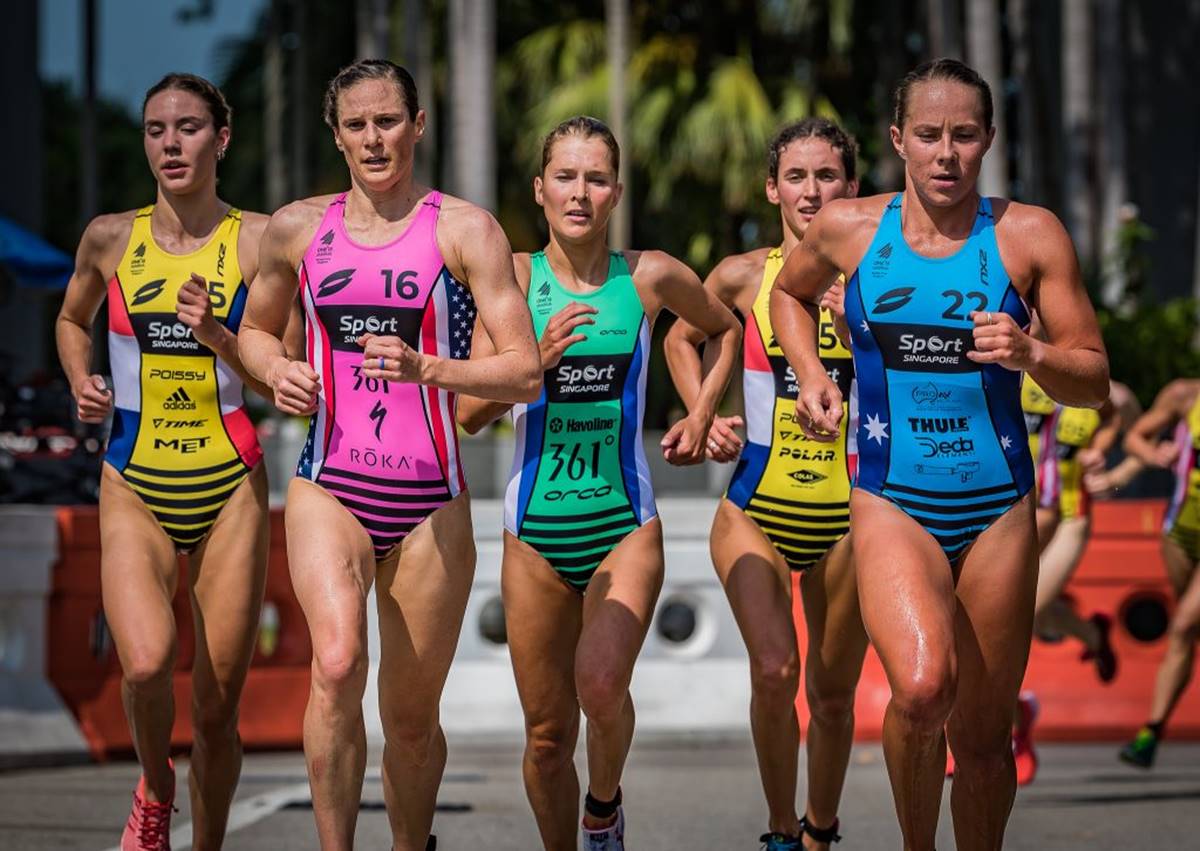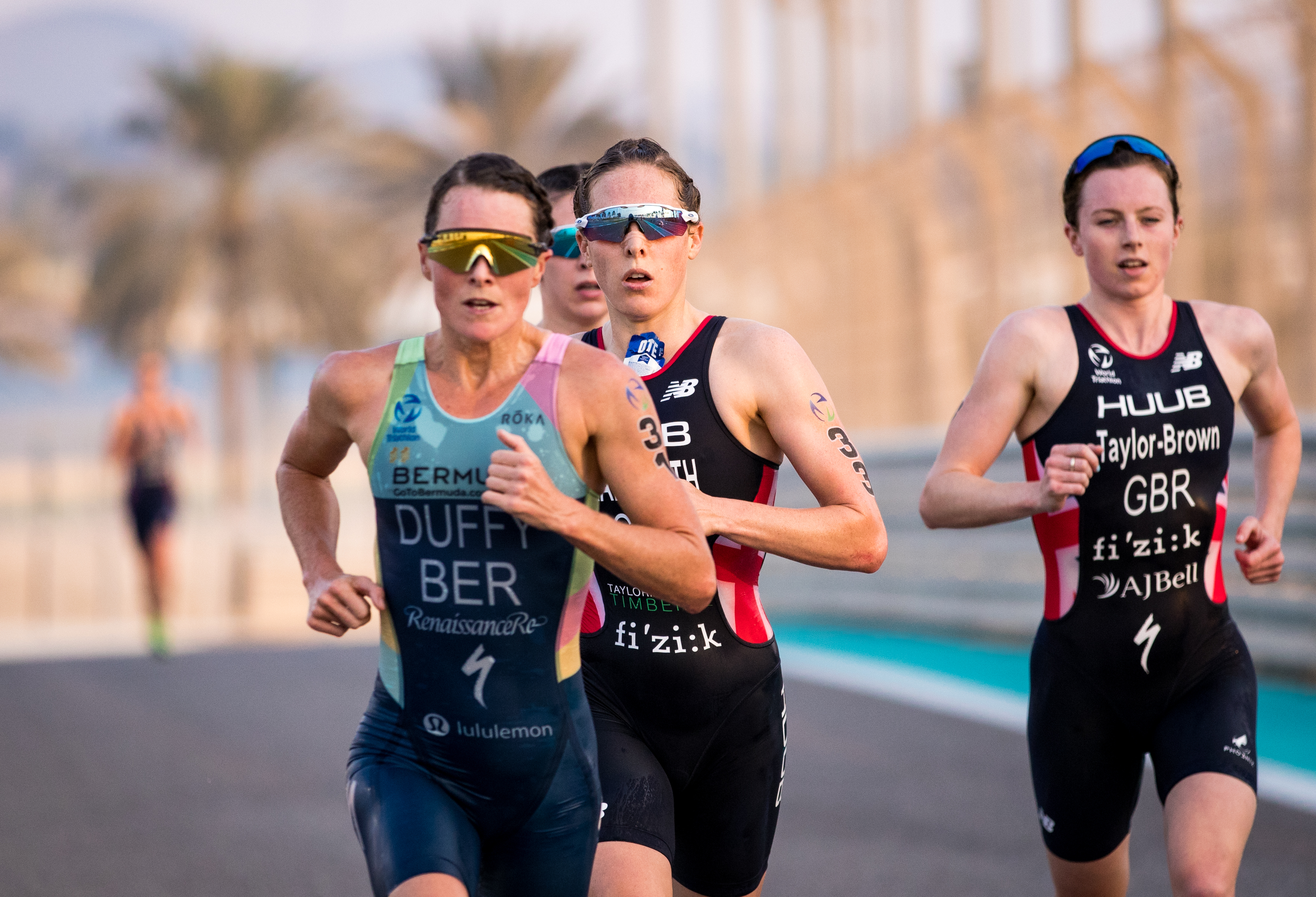

Featured
Why Not Try Triathlon
Modified: January 22, 2024
Discover the thrilling world of triathlon with our featured article. Learn how to train, compete, and achieve your goals in this ultimate multisport challenge.
Introduction
Triathlon is not just a sport; it’s a lifestyle that challenges individuals both physically and mentally. Combining swimming, cycling, and running into a single race, triathlon has gained immense popularity in recent years. It offers a unique and thrilling experience for athletes of all levels, from beginners looking to challenge themselves to seasoned professionals seeking to push their limits.
Triathlon showcases the ultimate test of endurance, strength, and resilience. It requires participants to excel in multiple disciplines, making it a true test of all-around fitness. Whether you’re a fitness enthusiast or a competitive athlete, embarking on a triathlon journey can bring numerous benefits and opportunities for personal growth.
This article will explore the world of triathlon, its benefits, and how to get started in this exhilarating sport. We’ll delve into the training methodologies, nutrition strategies, and gear selection that are crucial for success in triathlon. Additionally, we will address common challenges faced by triathletes and offer tips for overcoming mental barriers.
Triathlon events come in various distances, ranging from sprint to Ironman, allowing athletes to choose a race that aligns with their goals and abilities. Whether you’re dreaming of crossing the finish line in an Olympic-distance event or conquering the grueling Ironman, the excitement and satisfaction of completing a triathlon are truly unparalleled.
So, if you’ve ever wondered what it takes to become a triathlete or are simply looking for a new challenge to add to your fitness regime, strap on your helmet, lace up your running shoes, and dive into the world of triathlon!
What is Triathlon?
Triathlon is a multi-sport race that involves three different disciplines: swimming, cycling, and running. It originated in the 1970s and has since evolved into a global phenomenon, attracting athletes of all ages and abilities. Participants compete against each other to complete the race in the fastest time possible.
The order of the disciplines in a triathlon is consistent – swim, bike, and run. The distances can vary, depending on the specific race. The most common triathlon distances include sprint triathlon (750m swim, 20km bike, 5km run), Olympic triathlon (1.5km swim, 40km bike, 10km run), and Ironman triathlon (3.8km swim, 180km bike, 42.2km run).
The first leg of a triathlon is the swim, which can take place in open water such as lakes, rivers, or oceans, or in a pool for indoor events. Swimmers must navigate through a marked course, often surrounded by buoys, and aim to complete the required distance as quickly as possible.
Following the swim, participants transition to the cycling segment. They hop onto their bikes and ride a designated route. The cycling portion offers a chance to cover more ground and build speed. Cyclists must adhere to traffic rules and regulations, ensuring a safe and fair race environment.
Finally, after completing the cycling leg, triathletes transition once again, this time to the run. The final segment is where athletes put their endurance and mental toughness to the test. They must push through the exhaustion and fatigue accumulated from the swim and bike to complete the race.
Triathlons can take place in various settings, including urban areas, scenic countryside, and world-famous destinations. The diversity of race locations adds to the appeal and excitement of participating in a triathlon.
Triathlon is not just about the competition; it’s also about camaraderie and personal achievement. Athletes from different backgrounds come together to challenge themselves and support one another. Triathletes often form close-knit communities, providing encouragement and inspiration throughout their journey.
Participating in a triathlon offers a unique and fulfilling experience. It pushes individuals to their physical limits while fostering mental toughness and resilience. Triathlon demands well-rounded fitness, as participants need to excel in multiple disciplines.
Overall, triathlon is more than just a race; it’s a lifestyle that offers countless opportunities for growth, personal achievement, and the thrill of crossing the finish line.
Benefits of Triathlon
Engaging in triathlon provides numerous benefits that extend beyond the physical realm. Whether you’re new to exercise or a seasoned athlete, here are some of the key advantages you can expect from participating in triathlon:
1. Total Body Fitness: Triathlon is a multi-disciplinary sport that requires participants to train and excel in swimming, cycling, and running. This variety of activities engages different muscle groups, leading to improved overall fitness and strength.
2. Cardiovascular Endurance: The combination of swimming, cycling, and running in a triathlon challenges the cardiovascular system. Regular training in these disciplines can significantly improve your heart and lung health, enhancing your endurance and stamina.
3. Weight Loss and Body Composition: Triathlon training is highly effective in burning calories and shedding excess body weight. The combination of high-intensity workouts and endurance training maximizes calorie expenditure, leading to fat loss and improved body composition.
4. Mental Well-being: Triathlon requires mental fortitude and discipline. Each discipline pushes you to confront and overcome challenges, which can improve your mental resilience and translate into other areas of your life. Completing a triathlon can boost self-confidence and provide a sense of accomplishment.
5. Variety and Avoiding Boredom: Triathlon training is anything but monotonous. The combination of different disciplines keeps workouts exciting and dynamic. With swimming, cycling, and running to choose from, you’ll never get bored of the same routine.
6. Time Efficiency: Triathlon training allows you to maximize your time by incorporating three different sports into your fitness regime. Instead of focusing solely on one discipline, you can work on your swimming one day, cycling another, and running on a different day.
7. Social Connection: Triathlon attracts a vibrant and supportive community of athletes. Joining a local triathlon club or participating in group training sessions provides an opportunity to meet like-minded individuals, share experiences, and forge lasting friendships.
8. Goal Setting and Motivation: Triathlon events offer various distances and levels of difficulty, allowing you to set goals that align with your abilities. Working towards these goals provides motivation, accountability, and a sense of purpose in your training.
9. Increased Discipline and Time Management: Training for a triathlon requires commitment, discipline, and effective time management. Balancing the demands of swimming, cycling, and running alongside other responsibilities teaches valuable skills that can be applied in all areas of life.
10. Improved Overall Health: Engaging in triathlon promotes a healthier lifestyle by incorporating regular exercise, balanced nutrition, and proper recovery. Triathletes tend to adopt healthier habits, leading to reduced risk of chronic diseases and improved overall well-being.
As you can see, triathlon offers a wide range of benefits that extend far beyond physical fitness. It challenges both your body and mind, empowering you to achieve new levels of strength, endurance, and personal growth.
Getting Started in Triathlon
If you’re interested in embarking on a triathlon journey, here are some essential steps to help you get started:
1. Assess Your Fitness Level: Before diving into triathlon training, it’s important to evaluate your current fitness level. Consider your strengths and weaknesses in swimming, cycling, and running to identify areas that may require more focus and improvement.
2. Set Goals: Determine what you want to achieve in triathlon, whether it’s completing your first sprint triathlon or aiming for a specific time in an Olympic-distance event. Setting goals can help provide direction and motivation throughout your training.
3. Start with Small Steps: If you’re new to triathlon, it’s advisable to start with shorter distances and gradually build up. Begin with a sprint-distance race, which typically has shorter swim, bike, and run segments. This allows you to gain experience and confidence as you progress.
4. Get the Right Equipment: While triathlon can be done with basic equipment, investing in specific triathlon gear can enhance your performance and comfort. A well-fitting swimsuit or wetsuit, a sturdy bike suitable for triathlon, and proper running shoes are essential. Consider getting a professional bike fit to ensure optimal positioning.
5. Seek Guidance: If you’re new to triathlon, it can be helpful to seek guidance from experienced triathletes or a certified coach. They can provide valuable insights, training plans, and advice on technique, helping you progress safely and efficiently.
6. Follow a Training Plan: To prepare for a triathlon, it’s important to follow a structured training plan that incorporates swimming, cycling, and running workouts. A well-balanced plan includes a mix of endurance, speed, and recovery sessions to build up your fitness and improve your performance.
7. Focus on Technique: Proper technique is crucial in each discipline to maximize efficiency and minimize the risk of injury. Consider taking swimming lessons to improve your stroke, work on cycling drills to enhance your pedaling technique, and practice proper running form to optimize your performance.
8. Incorporate Cross-Training: While swimming, cycling, and running are the primary disciplines in triathlon, incorporating cross-training activities can help improve overall strength and prevent overuse injuries. Consider adding strength training, yoga, or Pilates to your routine.
9. Practice Transitions: Transitioning between the disciplines is an important aspect of triathlon. Practice transitioning from swim to bike and bike to run to improve your efficiency and avoid wasting precious time during races.
10. Listen to Your Body: Pay attention to your body’s signals and be mindful of signs of fatigue or potential injuries. Rest and recovery are just as important as training, so listen to your body and allow time for proper rest and rejuvenation.
Remember, the journey to becoming a triathlete is a process. Be patient, stay consistent with your training, and celebrate each milestone along the way. With dedication and perseverance, you’ll be ready to take on your first triathlon and embark on a lifelong adventure in the world of triathlon.
Training for Triathlon
Training for a triathlon requires a well-rounded approach that incorporates swimming, cycling, and running workouts. Here are some key considerations and tips to help you effectively train for a triathlon:
1. Create a Training Plan: Develop a structured training plan that outlines your weekly schedule and includes workouts for each discipline. Consider your current fitness level, time availability, and goals when designing your plan. Gradually increase the duration and intensity of your workouts as you progress.
2. Balance Endurance and Speed Work: Triathlon training involves a combination of building endurance and improving speed. Include long, steady-state workouts to build endurance, as well as interval training to improve speed and anaerobic capacity. Alternate between high-intensity and low-intensity workouts to avoid overtraining.
3. Swim Technique and Efficiency: Focus on improving your swim technique to become more efficient and conserve energy. Consider taking swim lessons or working with a coach to refine your stroke and breathing technique. Incorporate drills that target specific aspects of your swim stroke to enhance your form and efficiency.
4. Cycling Power and Endurance: Build cycling strength and endurance by incorporating interval training, hill repeats, and long rides into your training plan. Focus on maintaining a consistent cadence and vary your workouts to simulate race conditions. Practice pacing to optimize your performance in different terrains and distances.
5. Running Technique and Pacing: Pay attention to your running form and aim for an efficient stride. Gradually build your running mileage to improve endurance and practice running at race pace to familiarize yourself with pacing. Include speed work, such as intervals and tempo runs, to increase your running speed and efficiency.
6. Brick Workouts: Incorporate brick workouts into your training routine. These involve combining two disciplines in a single workout, such as a swim followed by a bike ride or a bike ride followed by a run. Brick workouts help simulate the sensation of transitioning between disciplines and improve your ability to perform well in race conditions.
7. Recovery and Rest: Allow time for proper rest and recovery to prevent overtraining and reduce the risk of injury. Include rest days in your training plan and prioritize sleep and nutrition to support your body’s recovery process. Listen to your body and adjust your training as needed.
8. Train in a Variety of Conditions: To prepare for different race conditions, train in various environments. Practice open water swimming to adapt to the dynamics of swimming in lakes or oceans. Train on different terrains for cycling and running, including hills, flat roads, and trails, to acquaint yourself with different surfaces and challenges.
9. Mental Preparation: Triathlon is not only a physical test but also a mental one. Build mental resilience by visualizing successful race scenarios and practicing positive self-talk. Set short-term and long-term goals to stay motivated throughout your training journey.
10. Monitor Progress and Adjust: Regularly assess your progress by tracking your workouts, measuring your performance, and monitoring your overall fitness level. Use this information to make adjustments to your training plan, as needed, and to set new goals to continue challenging yourself.
Remember to approach your training with patience and consistency. Each workout counts towards your progress, so stay dedicated, trust the process, and embrace the journey of becoming a stronger and fitter triathlete.
Nutrition for Triathlon
Nutrition plays a crucial role in optimizing performance and recovery in triathlon. To fuel your training and perform your best on race day, consider the following nutrition guidelines:
1. Balanced Macronutrients: Aim for a balanced intake of carbohydrates, protein, and healthy fats. Carbohydrates provide the primary fuel source for endurance activities, while protein supports muscle repair and recovery. Healthy fats contribute to overall energy and help regulate inflammation.
2. Adequate Carbohydrate Intake: Carbohydrates are essential for triathlon training as they provide energy. Focus on consuming complex carbohydrates, such as whole grains, fruits, and vegetables, to sustain your energy levels. Carbohydrate intake should be adjusted based on the duration and intensity of your workouts.
3. Optimal Hydration: Maintain proper hydration by drinking water throughout the day and during workouts. Hydration needs vary based on environmental conditions and individual sweat rates. Consider electrolyte replenishment during longer workouts or in hot conditions to maintain electrolyte balance.
4. Pre-Exercise Fueling: Prioritize pre-exercise nutrition to ensure adequate energy stores before training sessions or races. Consume a balanced meal or snack containing carbohydrates and a moderate amount of protein a few hours before exercise. Experiment with different foods to find what works best for your digestive system.
5. During Exercise Nutrition: For longer workouts or races, consider refueling with easily digestible carbohydrates, such as energy gels, sports drinks, or energy bars. It’s essential to practice your nutrition strategy in training to avoid gastrointestinal issues on race day.
6. Post-Exercise Recovery: Consuming a combination of carbohydrates and protein within the first 30-60 minutes after a workout can aid in glycogen replenishment and muscle recovery. Opt for a balanced meal or recovery drink that provides the necessary nutrients your body needs for repair and rehydration.
7. General Nutritional Principles: Focus on consuming nutrient-dense foods that provide a wide range of vitamins, minerals, and antioxidants. Include a variety of fruits, vegetables, lean proteins, whole grains, and healthy fats in your diet. Limit processed foods, excessive added sugars, and unhealthy fats.
8. Individualization: Nutrition needs vary from person to person. It’s important to experiment and find what works best for your body. Consider working with a sports nutritionist or registered dietitian who specializes in endurance sports to tailor a nutrition plan that suits your specific needs and goals.
9. Timing of Meals and Snacks: Plan meals and snacks around your training schedule to ensure you have adequate energy before and after workouts. Aim for a balance of macronutrients in each meal, prioritizing carbohydrates before exercise and protein for recovery afterward.
10. Consistency and Long-Term Approach: Consistency in your nutrition habits is key for optimal performance and overall health. Adopting a long-term approach to nutrition will help you establish healthy eating habits that support your triathlon journey and general well-being.
Remember, nutrition is a critical component of triathlon training. It’s important to find a nutrition plan that works best for your body, practice your race-day nutrition strategy during training, and listen to your body’s signals for optimal fueling and recovery.
Choosing the Right Gear
Choosing the right gear is essential for success and comfort in triathlon. Here are some key considerations when selecting your gear:
1. Swimwear and Wetsuits: Invest in swimwear that provides freedom of movement and minimal drag in the water. For open water swims, consider a wetsuit that offers buoyancy and insulation. Ensure a proper fit to allow for unrestricted movement and optimal swim performance.
2. Goggles: Find goggles that fit comfortably and provide a good seal to prevent water leakage. Opt for lenses that offer clarity and visibility in different light conditions. Consider tinted lenses for outdoor swimming to reduce glare.
3. Bike: Choose a bike that is suitable for triathlon and matches your skill level. Road bikes are commonly used in triathlon, but triathlon-specific bikes offer aerodynamic advantages. Consider your riding style, experience, and budget when selecting a bike.
4. Helmet: Safety is paramount in triathlon, so invest in a high-quality helmet that meets safety standards. Ensure the helmet fits properly and provides adequate ventilation for comfort during longer rides.
5. Cycling Apparel: Look for cycling apparel that is breathable, lightweight, and moisture-wicking. Consider padded shorts for added comfort during long rides and jerseys with pockets for convenient storage of nutrition or race essentials.
6. Running Shoes: Choose running shoes that provide proper support and cushioning for your foot type. Visit a specialty running store for a gait analysis to determine the right shoe for your running mechanics. Ensure you have enough time to break in and get comfortable with your shoes before race day.
7. Transition Gear: Consider investing in a transition bag or mat to keep your gear organized during transitions. Use elastic laces for quick and easy shoe changes, and practice transition setups during training to streamline your process on race day.
8. Nutrition and Hydration: Use a fuel belt, hydration pack, or bike water bottle cages to carry your nutrition and hydration essentials. Experiment with different options during training to find what works best for you. Consider the accessibility and ease of use when choosing your gear for nutrition and hydration.
9. GPS Watch or Multisport Watch: A GPS watch or a multisport watch can provide valuable data during training and races. Look for features such as GPS tracking, heart rate monitoring, and compatibility with multiple disciplines. Choose a watch that suits your needs and preferences.
10. Practice and Test: It’s important to practice using your gear during training to ensure everything fits well, functions properly, and provides the comfort and performance you need. Test your gear in various conditions, such as different weather or terrains, to familiarize yourself with its functionality.
Remember, choosing the right gear is a personal decision based on your specific needs, preferences, and budget. Take the time to research and test different options to find gear that will support your performance, safety, and enjoyment throughout your triathlon journey.
Common Challenges in Triathlon
Triathlon presents a unique set of challenges that triathletes may encounter throughout their journey. Here are some common challenges in triathlon and strategies to overcome them:
1. Time Management: Balancing triathlon training with other responsibilities can be challenging. Prioritize your training by creating a schedule that fits into your daily routine. Be efficient with your time and find creative ways to incorporate training, such as early morning sessions or commuting by bike.
2. Injury Prevention: The repetitive nature of triathlon training can lead to overuse injuries. Gradually increase your training volume and intensity, listen to your body, and prioritize rest and recovery. Include strength training exercises to strengthen supporting muscles and improve stability.
3. Swimming Confidence: For many individuals, swimming is the most intimidating discipline in triathlon. Overcoming this challenge involves consistent practice, seeking professional coaching or swim lessons, and gradually increasing your comfort level in the water. Practice open water swimming to familiarize yourself with race conditions.
4. Cycling Skills: Cycling efficiency and bike handling skills can initially pose a challenge. Seek opportunities to improve your bike handling, such as joining group rides or working on specific drills. Practicing on various terrains and different weather conditions can increase your confidence and skill level.
5. Mental Resilience: Triathlon demands mental toughness. There may be moments of self-doubt, fatigue, or discomfort during training or racing. Develop mental resilience through visualization techniques, positive self-talk, setting achievable goals, and pushing through challenging workouts. Embrace the discomfort and remember your motivation to stay focused.
6. Transition Efficiency: Transitions are a time-sensitive aspect of triathlon. Practicing transitions during training can help improve efficiency and minimize time wasted. Lay out your gear in a logical and organized manner, rehearse your transitions, and consider using elastic laces or other quick-release systems.
7. Nutrition Strategy: Proper nutrition is essential for optimal performance in triathlon. Experiment during training to find a nutrition strategy that suits your body’s needs and preferences. Practice your race-day nutrition plan to avoid gastrointestinal issues and optimize energy levels during the race.
8. Racing Tactics: Strategizing during a race can be challenging, especially when transitioning between different disciplines. Familiarize yourself with the racecourse, study the route elevation profile, and practice pacing during training. Start conservatively and gradually increase your effort as the race progresses.
9. Weather Conditions: Triathlon events can take place in various weather conditions, which may introduce additional challenges. Train in different weather conditions to prepare mentally and physically. Dress appropriately and adapt your race strategy based on the weather forecast. Learn to embrace the elements and stay flexible during the race.
10. Race Day Nerves: Nervousness and pre-race jitters are common before a triathlon. Develop a pre-race routine that helps you relax and focus. Arrive at the race early to familiarize yourself with the transition area and mentally prepare. Remember that nerves are normal and can often enhance performance.
Overcoming these challenges requires perseverance, dedication, and a positive mindset. Embrace the learning process, seek support from fellow triathletes, and celebrate your progress along the way. Remember, each challenge presents an opportunity for growth and improvement as you become a stronger and more resilient triathlete.
Overcoming Mental Barriers
Mental barriers can often hinder progress and performance in triathlon. Overcoming these barriers is a critical aspect of achieving success in the sport. Here are some strategies to help you overcome mental barriers:
1. Identify and Acknowledge: Recognize the mental barriers you may be facing, such as self-doubt, fear of failure, or lack of confidence. By acknowledging these barriers, you can start to address them and work towards overcoming them.
2. Set Realistic Goals: Break down your long-term goals into smaller, attainable milestones. This helps to create a sense of achievement and builds confidence along the way. Setting realistic goals provides a clear focus for your training and helps to overcome self-doubt.
3. Positive Self-Talk: Replace negative self-talk with positive affirmations. Use encouraging and empowering statements to boost your confidence and self-belief. Remind yourself of your strengths, past successes, and the progress you have made in your triathlon journey.
4. Visualization Techniques: Utilize visualization techniques to mentally rehearse your races and overcome anxiety. Mentally walk through each discipline, visualize yourself performing at your best, and achieving your goals. This technique can help instill a sense of confidence and familiarity when race day arrives.
5. Embrace Discomfort: Triathlon is a challenging sport that requires pushing beyond your comfort zone. Embracing discomfort during training allows you to build mental resilience and adapt to the demands of racing. Recognize that discomfort is temporary and a necessary part of growth.
6. Focus on the Process: Instead of solely focusing on race results, shift your focus to the process and the steps you need to take to achieve your goals. Enjoy the journey of training, celebrating small victories along the way. This mindset shift can alleviate performance anxiety and help you stay in the present moment.
7. Break Training Plateaus: Plateaus in performance can lead to frustration and self-doubt. If you find yourself in a training rut, change up your routine with new workouts, cross-training activities, or seeking guidance from a coach. Breaking through plateaus can reignite your motivation and restore confidence.
8. Mental Preparation: Incorporate mental preparation techniques, such as mindfulness or meditation, into your training routine. These practices help you focus and remain present during races, manage stress, and stay mentally sharp. Consistent mental preparation can provide a competitive edge.
9. Seek Support: Surround yourself with a supportive network of fellow triathletes, coaches, or mentors who understand the challenges of the sport. Share your concerns and experiences, and seek advice and guidance from those who have overcome similar mental barriers.
10. Celebrate Achievements: Acknowledge and celebrate your achievements, no matter how small they may seem. Recognize your progress and the effort you have put into your triathlon journey. Celebrating achievements boosts confidence, motivation, and enjoyment of the sport.
Overcoming mental barriers requires patience, perseverance, and a proactive approach. Implement these strategies into your training and racing, and remember that building mental resilience is a continuous process. With determination and a positive mindset, you can overcome mental barriers and unlock your full potential as a triathlete.
Triathlon Events and Competitions
Triathlon events and competitions offer a thrilling and rewarding experience for triathletes of all levels. Here is an overview of various triathlon distances and the different types of events you can participate in:
1. Sprint Triathlon: A sprint triathlon is a great starting point for beginners or those looking to challenge themselves. It typically consists of a 750-meter swim, a 20-kilometer bike ride, and a 5-kilometer run. Sprint triathlons are known for their fast-paced and exhilarating atmosphere.
2. Olympic-Distance Triathlon: An Olympic-distance triathlon, also known as the standard-distance triathlon, features a 1.5-kilometer swim, a 40-kilometer bike ride, and a 10-kilometer run. This distance is a popular choice for athletes who want to test their endurance and speed.
3. Half Ironman: The Half Ironman, also known as the 70.3 triathlon, is a demanding intermediate distance event. It involves a 1.9-kilometer swim, a 90-kilometer bike ride, and a 21.1-kilometer run (half marathon). Participants often enjoy the challenge of this distance, as it requires a balance of speed and endurance.
4. Ironman: The Ironman triathlon is the pinnacle of endurance events. It includes a 3.8-kilometer swim, a 180-kilometer bike ride, and a full marathon run of 42.2 kilometers. Ironman events are renowned for their grueling nature, attracting elite athletes and dedicated amateurs alike.
5. Relay Triathlon: Relay triathlons allow teams of two or three individuals to complete different legs of the race. Each team member focuses on one discipline, such as swimming, cycling, or running. It’s a great option for those who want to experience the thrill of triathlon as part of a team.
6. Off-Road Triathlon (Xterra): Off-road triathlons, known as Xterra, take place on rugged terrains such as trails, mountains, or cross-country environments. These races incorporate off-road swimming, mountain biking, and trail running. Xterra events offer a unique challenge and the opportunity to explore nature’s beauty.
7. Draft-Legal Triathlon: Draft-legal triathlons, often seen in elite and ITU (International Triathlon Union) races, allow drafting on the bike segment. Drafting involves cycling closely behind another competitor to reduce wind resistance. These races are known for their fast-paced, tactical nature, and require strong cycling and running skills.
8. Age-Group Competitions: Age-group competitions are open to individuals of specific age categories, allowing athletes to compete against others within their age group. These events provide equitable competition and the chance to qualify for national or international championships based on performance.
9. Multisport Festivals: Multisport festivals combine various triathlon distances and races with other events such as duathlon (run-bike-run), aquathlon (swim-run), or aquabike (swim-bike). These festivals offer a vibrant atmosphere, multiple race options, and a range of distances to cater to different skill levels and interests.
10. Virtual Triathlons: With the rise of technology and virtual events, virtual triathlons have gained popularity. Participants complete their swimming, cycling, and running segments individually at their own location and time. These events allow flexibility and provide a sense of community through online platforms.
Triathlon events and competitions offer opportunities to challenge oneself, set goals, and experience the camaraderie of the triathlon community. Whether you are a beginner or an experienced triathlete, there is a triathlon event out there that suits your abilities, interests, and personal goals. Embrace the excitement of race day and enjoy the journey towards achieving your triathlon aspirations.
Conclusion
Triathlon is a demanding and exhilarating sport that challenges athletes both physically and mentally. It combines swimming, cycling, and running into a thrilling race that showcases endurance, strength, and resilience. Engaging in triathlon offers numerous benefits, including improved fitness, cardiovascular health, weight management, and mental well-being. Triathlon is not just a sport; it’s a lifestyle that fosters personal growth, discipline, and a sense of accomplishment.
To get started in triathlon, assess your fitness level, set realistic goals, and invest in the right gear. Implement a well-balanced training plan that includes swimming, cycling, and running workouts, along with strength training and adequate rest. Nutrition also plays a crucial role in triathlon, ensuring optimal performance and recovery. Consider the importance of hydration and fueling strategies during training and racing.
Triathlon comes with its own set of challenges, from time management and mental barriers to injury prevention and race day nerves. Overcoming these obstacles requires determination, patience, and a positive mindset. Seek support from fellow triathletes, coaches, and mentors, and celebrate your achievements along the way.
The world of triathlon offers various distances and competitions, catering to athletes of all levels. From the sprint triathlon to the prestigious Ironman, there is an event for everyone. Relish the experience of racing alongside like-minded individuals, enjoying the adrenaline, and crossing the finish line with a deep sense of accomplishment.
As you embark on your triathlon journey, remember to enjoy the process, stay committed to your goals, and embrace the challenges. Triathlon will push you to your limits, both physically and mentally, but the rewards are immense. So, strap on your goggles, clip into your bike pedals, and lace up your running shoes – the world of triathlon awaits your adventure of a lifetime.
